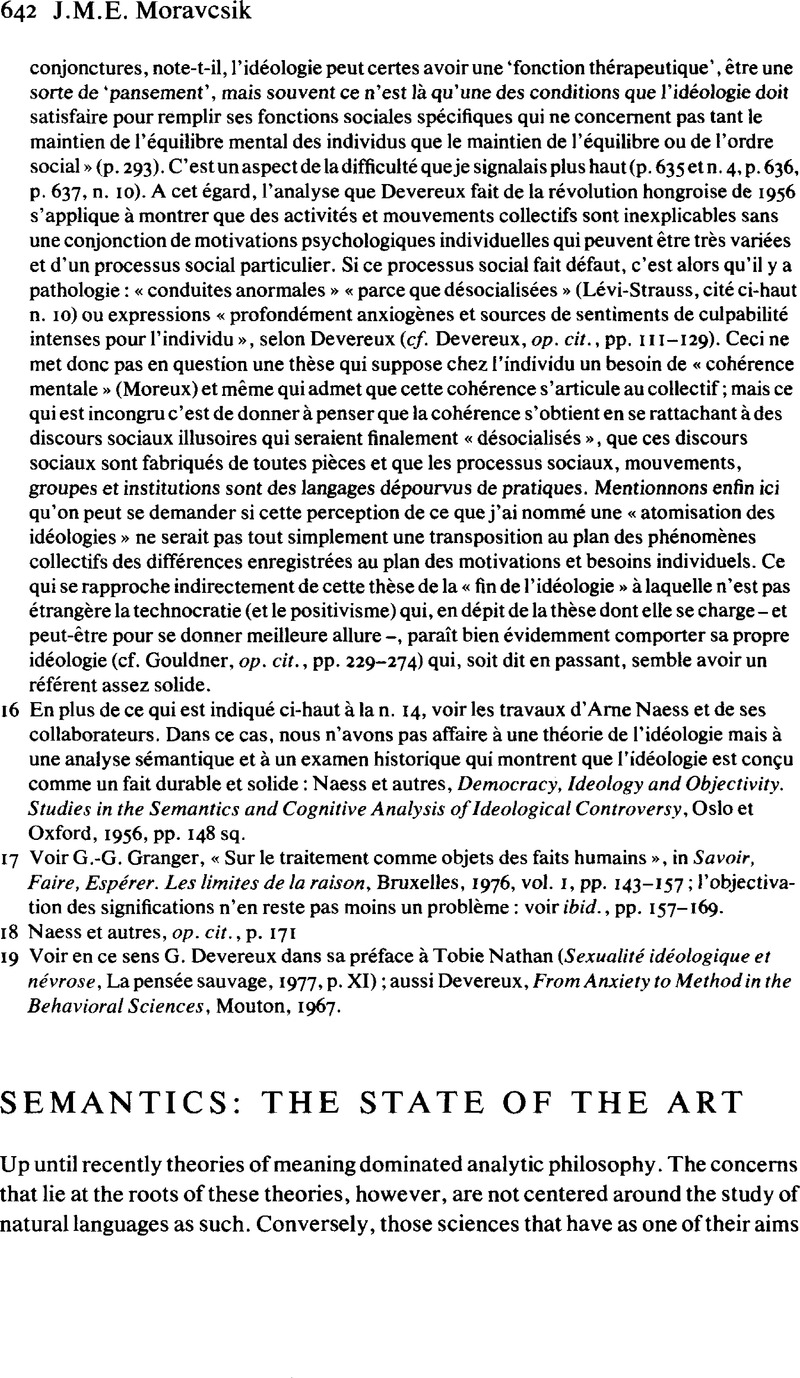No CrossRef data available.
Published online by Cambridge University Press: 05 May 2010

1 Gabbay, D.M., “Tense Logics, and the Tenses of English” in Logic and Philosophy for Linguists ed. Moravcsik, J., Mouton, The Hague 1974, pp. 177–186.Google Scholar
2 The first work was by Hintikka. For another treatment and partial bibliography, see Gabbay, D. and Moravcsik, J. “Branching Quantifiers, English, and Montague Grammar” in Theoretical Linguistics vol. 1. 1974, pp. 139–157.CrossRefGoogle Scholar
3 Hintikka, J.The Semantics of Questions and the Questions of Semantics, Acta Philosophica Fennica vol. 28 issue 4, 1976.Google Scholar
4 Dummett, M., “Truth” Proceedings of the Aristotelian Society 59 (1958–59) pp. 141–162.CrossRefGoogle Scholar
5 Kaplan, David Demonstratives unpubl. omimeo. UCLA Philosophy Dept. 1977.Google Scholar
6 Kasher, A. “Mood Implicatures: a Logical Way of Doing Generative Pragmatics“ Theoretical Linguistics vol. 1. 1974 pp. 6–38.CrossRefGoogle Scholar
7 See, e.g. Fodor, J.A., The Language of Thought T. Crowell Co. New York, 1975Google Scholar and Winograd, Terry, Understanding Natural Language New York, 1972.Google Scholar
8 Grice, H.P., “Meaning” Philosophical Review, v. 66, 1957, pp. 377–388.CrossRefGoogle Scholar
9 E.g. Culicover, P. and Wexler, K. “Some Syntactic Implications of a Theory of Language Learnability” in Formal Syntax ed. Cullicover, P., Wasow, T., Akmajian, A., Academic Press, New York, 1977, pp. 7–60Google Scholar, and the ensuing comments by L. Baker.
10 A.W. Burks, “Icon, Index, and Symbol” Philosophy and Phenomenological Research 1949, pp. 673–689.